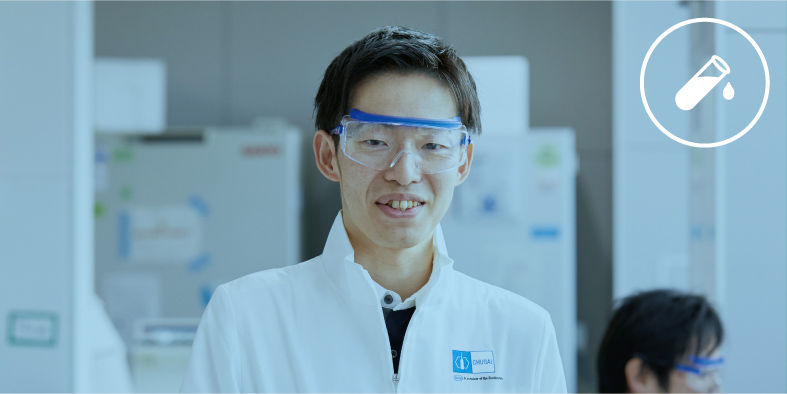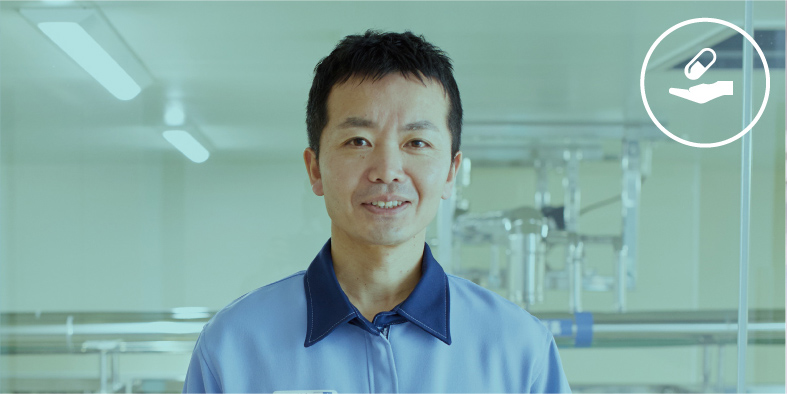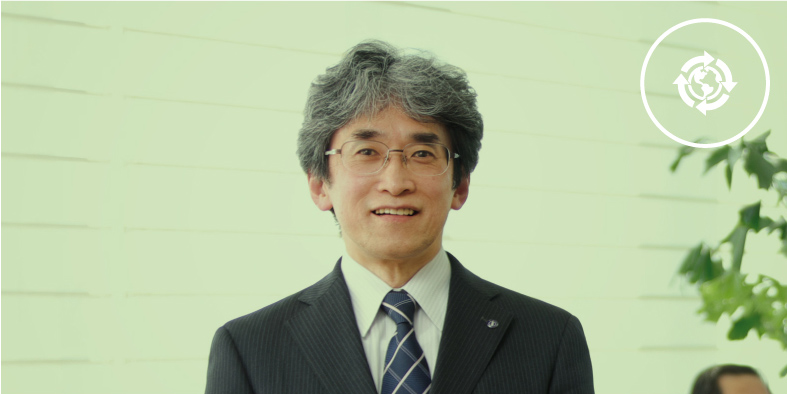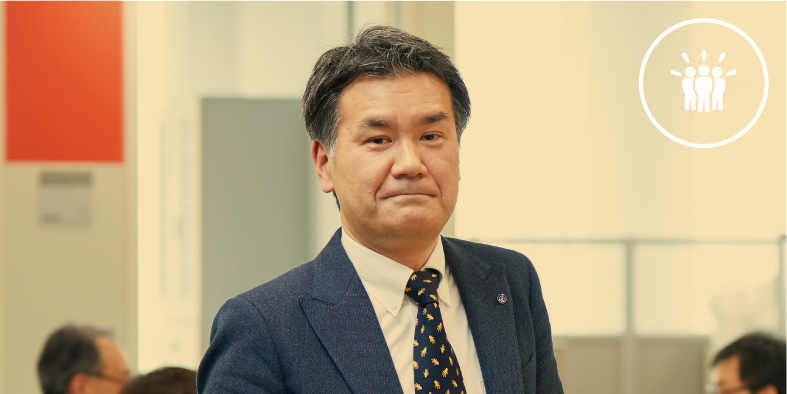Priority Issues to Enhance Corporate Value
Creating Innovative Drugs That Address Unmet Medical Need


In 2017, Chugai spent ¥88.9 billion on research and development. As a percentage of revenues, Chugai's R&D expenditures are 16.6%, which is relatively low compared with other Japanese pharmaceutical companies. This is a reflection of the efficiency of Chugai's R&D expenditures, made possible by the strategic alliance with Roche. Taking advantage of this, we have continued to focus on the evolution of our unique research technologies. As a result, 13 products in our development pipeline originate from our own research. Our products currently on the market are already addressing unmet medical need; including products in-licensed from Roche, 74% percent of our product sales qualify for premium pricing, an exceptionally high percentage.
1. Avastin, which was subject to special market-expansion repricing, is counted as a product qualifying for premium pricing because it was assumed to meet the conditions for such pricing in 2017
-
- Strengths
-
- Cutting-edge drug discovery technologies, especially biotechnology
(Technology-driven drug discovery that enables differentiation) - Strategic alliance with the Roche Group
(Sharing of infrastructure, including a rich compound library)
- Cutting-edge drug discovery technologies, especially biotechnology
-
- Challenges
-
- Increasing difficulty and escalating
cost of new drug development worldwide - Potential paradigm shift in drug
discovery due to disruptive technologies - Lack of adequate standards for governments to assess the value of innovation
- Lack of attractive infrastructure
in Japan for retaining top researchers
- Increasing difficulty and escalating
Establishment of discovery technologies for middle molecule drugs is progressing. We want to deliver these next-generation medicines to patients.
Chemical Biotechnology Group
Discovery Technology
Research Dept. Takeo Iida
Today there are numerous innovative drugs that have revolutionized medical treatment. However, they can act on only a small fraction of the targets that cause disease. One of the roles we have taken on to help patients still suffering from illness is to create middle molecule drugs.
Small molecule drugs can penetrate into cells, but are unable to block protein-protein interactions. Conversely, therapeutic antibodies are able to act strongly and specifically on targets, but their size prevents them from passing through cell membranes. Combining the advantages of both of these drug categories, middle molecule drugs are next-generation medicines that can approach previously undruggable targets because they can both enter into cells and act strongly and specifically on targets.
Chugai has been conducting basic research on middle molecules for more than a decade. We have accelerated these efforts in the last few years, and are now building a middle molecule compound library and establishing basic drug discovery technologies, including a compound screening method. We have started applying these technologies to various discovery stage projects, which has yielded a steady stream of candidate compounds.
There have been many hurdles, but drug discovery experts in every area, including biotechnology, chemistry, pharmacology, pharmacokinetics and safety, have collaborated to build better compounds and assay methods, which has led to the advances we are seeing today. These advances are the result of the continuous efforts of team members to overcome challenges for the benefit of patients.
However, unprecedented challenges will continue to arise. Chugai is making company-wide efforts to bring this new kind of medicine to patients, and by surmounting the issues faced at every stage – not only in research but in manufacturing, clinical development and regulatory filings – we intend to be a pioneer in creating and developing middle molecule drugs.
Quickly Bringing New Treatment Options to Patients


With its own innovative projects along with numerous compounds in-licensed from Roche, Chugai currently has 41 pipeline projects, among the most of any Japanese pharmaceutical company. Cooperation with Roche, a cross-departmental lifecycle management system, and production functions that support rapid product launches and simultaneous development of multiple projects have led to a steady succession of product launches and new indications – a total of seven from 2015 through 2017.
As a result, we have been able to make innovative products available to patients in a timely and appropriate manner, and currently hold the top market share in Japan for oncology and therapeutic antibody products.
1. Copyright © 2018 IQVIA. Source: JPM 2017. Reprinted with permission. The scope of the market is defined by Chugai.
-
- Strengths
-
- One of the richest pipelines in Japan
- High product potential
that addresses unmet medical need - Strategic alliance with the Roche Group
(Global development using Roche's network)
-
- Challenges
-
- Escalating measures in various
countries to contain healthcare costs - Stricter standards for development
and production worldwide - Intensifying global competition in development
- Escalating measures in various
UK3, a new manufacturing facility at the Ukima Plant, will enable rapid launches of therapeutic antibodies and simultaneous development of multiple projects.
Manufacturing Group 5 Ukima Plant Akinori Imamura
Chugai has a rich pipeline of biopharmaceuticals as a result of the continuous creation of new drug candidates made possible through the use of its antibody engineering technologies. The key to making these new drug candidates available to patients as quickly as possible is to increase speed at every stage from development to commercial production and enable the manufacture and supply of multiple products.
The Ukima Plant has been developing therapeutic antibodies using two manufacturing facilities, UK1 and UK2, for the supply of investigational drugs for early development. With the completion of UK3, a new facility for handling late clinical development to initial commercial production, we have established an end-to-end production system from early clinical development to launch that enables rapid development of multiple projects. This integrated system is not only top level in Japan, it is world-class.
Flexibility is the key feature of UK3. By flexibly combining its six 6,000-liter bioreactor tanks with two purification lines, it will be capable of simultaneously producing two products in the amounts required. Its design is also adaptable to the different manufacturing methods specific to engineered antibodies. The flexibility of this innovative facility will enable us to supply our proprietary engineered antibody drug candidates to patients at an unprecedented speed.
The UK3 building is also seismically isolated and contains emergency power generators, making the facility highly disaster resistant and capable of uninterrupted supply of medicines. Moreover, the production lines have a closed system design to the maximum extent possible to preserve a high level of quality and greatly reduce risk of contamination. In addition, the new facility has been designed to incorporate information technology for compiling production records and other data, enabling continuous improvement in terms of quality and cost.
Installation of equipment is complete, and performance testing has begun. Given the sophistication and complexity of this equipment, training of technicians and information sharing among members is essential. Members of the numerous departments concerned are working toward the start of trial production in the third quarter of 2018. We are committed to achieving the stable operation of this advanced production facility so that Chugai's innovative medicines can be delivered to patients as quickly as possible.
Providing Solutions for Better Healthcare


Providing solutions to healthcare providers is another way in which Chugai contributes to patients and their treatment. Our initiatives for promoting appropriate use of drugs include proposing treatment options and adverse event management strategies according to regional characteristics and patient need, providing various kinds of information, and supporting these efforts by collecting and evaluating a vast amount of safety information from around the world. We provide appropriate information based on state-of-the-art science in response to the approximately 60,000 inquiries we receive each year from healthcare providers and other customers.
As a result of these initiatives, Chugai ranks 3rd in assessments from healthcare providers.
1. Number of inquiries to the Medical Information Department (including telephone, e-mail and fax inquiries)
2. Based on a survey of overall assessments of companies by physicians in hospitals with 100 or more beds, as defined by Chugai
-
- Strengths
-
- High product potential that
addresses unmet medical need - Commitment to safety management
- Support for healthcare delivery
- Knowledge and experience as a pioneer in personalized healthcare (PHC)
- High product potential that
-
- Challenges
-
- Policies to dramatically reduce drug costs in Japan
(revision of drug pricing system) - Tightening of regulations for safety,
quality assurance and marketing - Increasing specialization and sophistication of healthcare providers' information requirements
- Policies to dramatically reduce drug costs in Japan
We cooperated with people in various occupations to establish a clinic/hospital referral system to increase the treatment rate of osteoporosis.
Sect. 4
Yokohama Branch
(Currently assigned to Oncology Sect. 3,
Tokyo Branch 1) Aya Kawai
Osteoporosis increases the risk of bone fractures even in normal daily life. Fractures of the femoral neck and spine in particular can severely impact patients' quality of life, for example, by causing them to become bedridden. Because of this, osteoporosis has attracted public attention. However, unless a bone density test is done, many people are unaware that they have the disease until they suffer a bone fracture. Consequently, the treatment rate of osteoporosis in Japan is estimated at only about 20 percent.
Kanagawa Prefecture, which my team was in charge of, is Japan's second largest prefecture by population but ranked third lowest in the screening rate. The treatment rate was only average, and the number of qualified osteoporosis managers* was low considering the number of patients requiring diagnosis or treatment. We wanted to do whatever we could to improve conditions for osteoporosis treatment in the region, so we set out to establish a diagnosis and treatment model with the cooperation of various people within and outside the Company.
Our first task was to make it easier for potential patients to get tested and receive treatment. Since the number of facilities with bone density testing equipment is limited, we worked to establish a clinic/hospital referral system by creating a referral list and sharing information on facilities so that patients could receive advice from general practitioners about testing facilities and receive referrals to suitable treatment facilities if diagnosed. At the same time, we held workshops and meetings to share best practices with physicians in specialty areas including orthopedic surgery, gynecology and internal medicine, as well as pharmacists and laboratory and other medical technicians, and actively worked to create a structure for raising awareness. We also promoted long-term treatment and improvement in drug adherence using Chugai products and other medicines.
As a result of these initiatives, there has been a noticeable increase in the number of referrals. Our efforts have also received recognition, and the commitment of Chugai employees to addressing the issues facing patients and healthcare providers has helped to build trust. In 2017, our initiatives were commended at the Liaison Conference, an event for sharing activities within the Company. We plan to spread success stories such as this nationwide, and want to further evolve the clinic/hospital referral system.
* Medical staff who are certified by the Japan Osteoporosis Society as specialists in osteoporosis liaison services
Environmental, Health and Safety Management throughout the Value Chain


Environmental protection, which has a significant impact both in and outside the Company, and health and safety management underpin Chugai's business activities for realizing its mission to benefit the medical community and human health around the world. Accordingly, we conduct a wide range of environmental, health and safety (EHS)-related initiatives throughout the Company. We are enhancing environmental management at all business sites to ensure efficient use of energy and appropriate use of water and discharge of wastewater. In health and safety initiatives, we emphasize the physical and mental health of employees, and in recent years have been focusing in particular on activities to support cancer treatment and mental health. The extensive support provided through our personnel systems and organizational culture has received external recognition.
1. A certification given by Japan's Ministry of Economy, Trade and Industry and Nippon Kenko Kaigi to large companies in Japan that practice outstanding health and productivity management. For details, see the website of Japan's Ministry of Economy, Trade and Industry.
-
- Strengths
-
- Integrated environmental,
health and safety management - Ongoing initiatives to address environmental issues based on mid-term goals
- Timely sharing of issue resolution through cooperation with the Roche Group
- Integrated environmental,
-
- Challenges
-
- Enhance supplier management system
- Develop EHS auditors
- Strengthen ability to address
increasingly sophisticated EHS issues
Chugai has announced its Health Declaration. Quantitative targets will take health management to the next level.
Health and Safety Group,
Corporate Social
Responsibility Department Nobuaki Kato
Chugai has issued a “Health Declaration” to accelerate the “health and productivity management” that it has focused on up to now, and announced health management policies and priority agenda targets. Employee health management applies not just to employees who are having problems or are on leave due to illness or injury, but to all employees who need special consideration for their health status, including people with anomalies observed in health checkups, people working long hours, expectant and nursing mothers, and employees with disabilities. Occupational physicians, nurses, psychologists, health officers and other occupational health staff have provided the necessary support in cooperation with human resources staff and workplace managers and supervisors. These measures have produced results to a certain extent, and we plan to continue them while also focusing on prevention, including health and disease education.
One area where Chugai has been in the forefront is enhancement of support systems for mental health and cancer treatment.
To facilitate a smooth return to work for employees on leave due to mental health issues, we conduct an ongoing program tailored to each individual. We have found that this program improves the relapse-free job retention rate one year after the return to work. In addition, as a leader in the field of oncology, Chugai has enhanced its support for employees who are working while undergoing cancer treatment so that they can do both. We continue to maintain and improve the consultation system for carrying out measures in accordance with treatment conditions as well as the support system for working during outpatient treatment.
A new initiative is to use employees' self-evaluation of their performance to quantify and analyze measures for employee health and the work environment. As a result, we will be able to set targets for each measure, which will enable more effective actions.
Developing Talent That Generates Innovation


Chugai has more than 7,000 employees. We believe that they can perform to their full potential by sharing and embodying Chugai's mission. Our human resource management is focused on developing employees who will generate innovation in line with our management strategies. In particular, among the various goals of our diversity and inclusion (D&I) initiatives, we aim to increase the percentage of female managers and the percentage of employees using the telecommuting system. We see the yearly increase in these percentages as a sign of progress in fostering an inclusive organizational culture.
1. Percentage of eligible employees
2. Number of female managers as a percentage of the total number of managers in the Company
-
- Strengths
-
- An organizational culture that emphasizes adherence to the Chugai Business Conduct Guidelines (Chugai BCG)
- A PDCA cycle aimed at raising
the level of human resource capabilities - Implementation of an integrated system for productivity improvement, work-life synergy and D&I
- Infrastructure for personnel
exchanges with the Roche Group
-
- Challenges
-
- Increase awareness of Chugai
among new graduates - Strengthen our ability to recruit global talent
- Enhance our organizational ability to respond flexibly to changes in the external environment
- Establish workplaces that enable diverse employees to perform at their best
- Increase awareness of Chugai
Through the evolution of talent management, we will advance a human resource strategy aligned with Chugai's management strategies.
Global HR Group
Human Resources
Management Department Koma Oki
IBI 18 is a strategic plan designed to raise Chugai's competitiveness to a global level, and requires greater quality and speed in each of its functions. We are also entering fields and specialty areas that cannot be handled with conventional approaches, so we need to identify people who have the necessary capabilities. Ensuring diversity to build a foundation for generating innovation is also becoming more important.
Accordingly, Chugai further upgraded its talent management system in 2017, restructuring it on a global basis. The new system places emphasis on assessing human resources in terms of individual qualities such as ability, experience, aptitude and career orientation. Specifically, we are building a globally shared personnel database, defining global competencies, clarifying key positions for execution of strategies, and identifying candidates for them.
The global competencies we have defined are in the form of seven standards to provide a simpler, more universal framework than we had previously. These clearer evaluation measures will enable employees to identify the gaps between the standards and their own performance, and apply that knowledge to improving their capabilities. At the same time, managers can engage in dialogue with those employees about their improvement actions and career plans, and promote human resource development. These efforts have already begun.
The foundation for evolution is now in place, but the key to assessing human resources and unlocking their full potential is to provide opportunities and environments that make the most of people's talents, allowing each individual to flourish. To realize this objective, we will promote communication on human resources and employee development, and foster an organizational culture in which they are given priority.
| Decision-making Standards | Customer Focused |
|---|---|
| Global Perspective | |
| Integrity | |
| Behavioral Standards | Strategic Thinking |
| Collaboration | |
| Commitment | |
| Team & People Development |




